Chart of the week: 30% of shoppers believe that product reviews from people like them display understanding from retailers
Shoppers now want brands that connect with them in a number of different ways, offering the best experience but also showing that they have similarities. They want to purchase from companies that understand them, their needs and their pain points. While a personalized experience can help with this, there are other tools you can use online to build trust and relationships with consumers.
One beneficial tool that e-commerce brands should seek to utilize more is customer reviews. New research from Salsify shows that 30% of customers believe that product reviews from people like them are a good sign that a brand or retailer understands them.
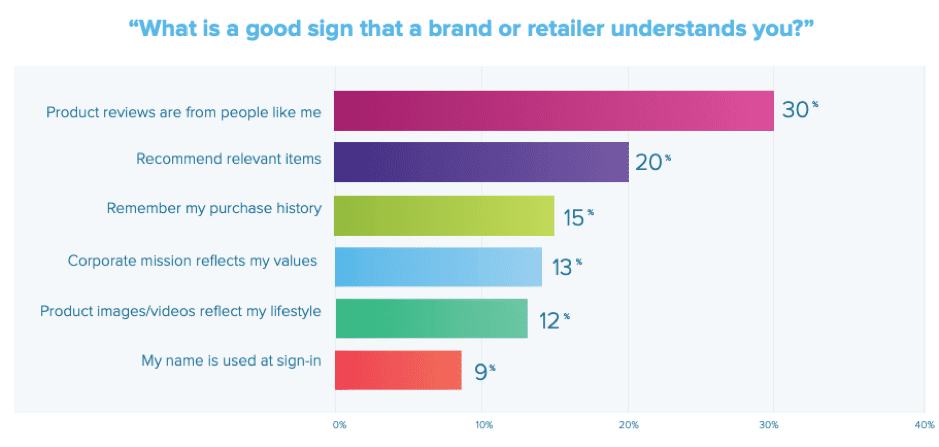
It seems that customers are now looking at reviews to see the type of person buying from a brand, rather than simply checking the quality of the products. In fact, this is the biggest indication, according to survey respondents, as to whether a brand understands its customers.
Product reviews from people a customer sees as being like them are even more important than relevant items being recommended. This shows the value in social proof for brands, especially when it comes to successfully marketing to their target audience.
Building trust with reviews
Customer reviews don’t just show potential shoppers that a brand is like them, they can also help demonstrate quality. Consumers between the ages of 18 and 64 all see positive reviews as being the bigger indication of product quality. Out of six different age groupings, product reviews were seen as more important when identifying quality than a brand name.
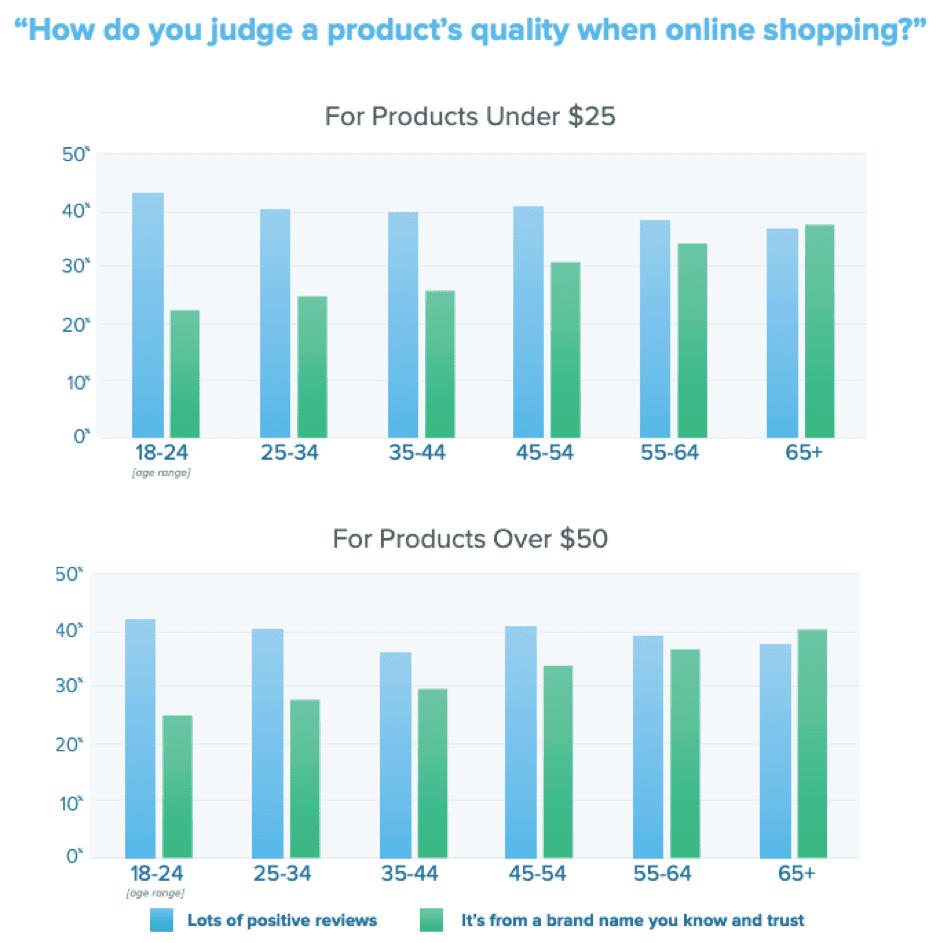
Only those over the age of 65 believe that knowing and trusting a brand is a bigger indication of a product’s quality when shopping online than positive reviews. Shoppers aged between 18 and 24, on the other hand, are much more likely to judge products by the reviews they get, with over 40% stating this for both products under $25 and over $50.
This means that a shopper’s experience of your brand and product can have a huge impact on potential customers. A positive experience can lead to a good review, which in turn suggests product quality to those browsing your site – even if your brand is not a familiar one. A negative review, therefore, can be the thing that stops someone from making a purchase and returning to your site.
How many reviews do shoppers expect?
It isn’t just the quality of reviews that consumers look out for, the number of reviews can also have a big impact. The average number of reviews expected by shoppers when looking at a product online is 112, showing that the more you can do to get people to leave honest reviews, the better the impact on your brand.
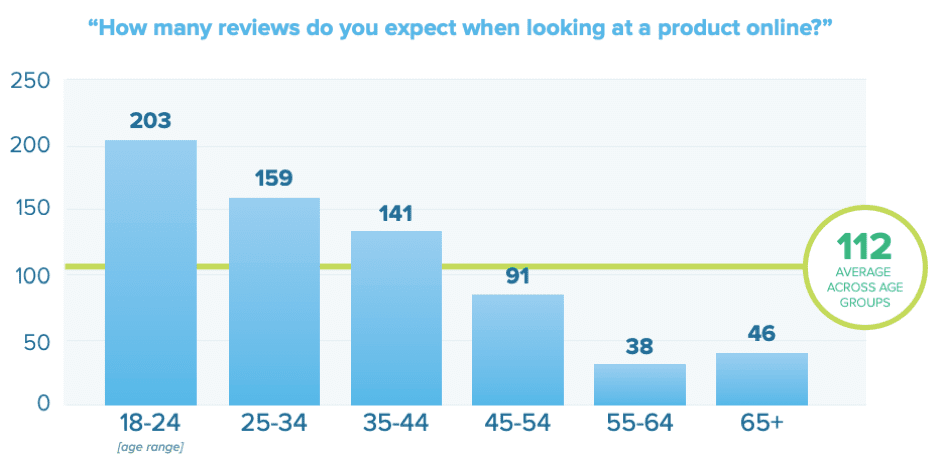
While the average is fairly high, there is a fair bit of disparity across the age groups, so the number of reviews your brand should showcase depends on your target audience.
Once again, those aged between 18 and 24 seem to put the most store in reviews, as this age group expects 203 reviews for a product when shopping online. In comparison, those aged between 55 and 64 only expect 38 reviews for a product, which is lower than the 65+ age group, despite this group putting less importance in product reviews.
Both the 25 to 34 and 35 to 44 age groups both expect over 100 product reviews when shopping online, showing that encouraging and rewarding reviews could be a good strategy if you have an audience aged between 18 and 44.
Lack of information leads to cart abandonment
While product reviews are a key part of the decision-making process, they are not the only deciding factor when it comes to making a purchase. The biggest reason a shopper is likely to abandon a purchase is that not enough information or details are provided, according to 69% of consumers.
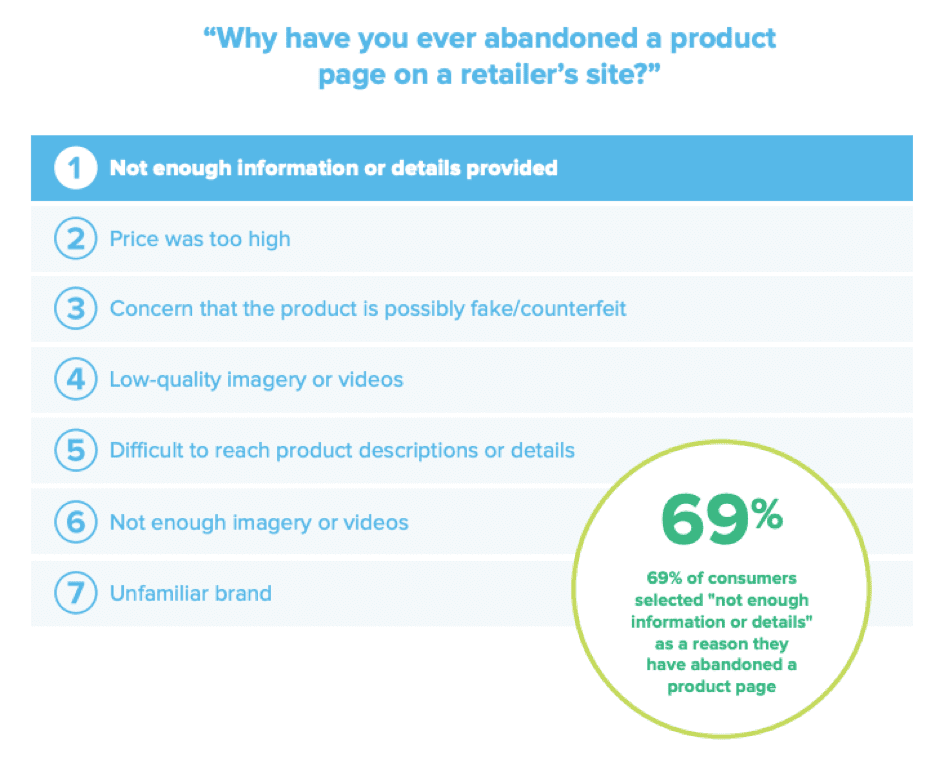
This reason even topped a high price, showing that shoppers are happy to purchase more expensive products if they have the information to support the higher price tag. However, a high price was the second most popular reason for abandoning an online basket.
Other reasons given were concerns that a product could be fake, low-quality images, product details that were difficult to reach, a lack of imagery and an unfamiliar brand. The fact that an unfamiliar brand was lowest on the list of issues causing cart abandonment shows that shoppers are willing to purchase from a company they don’t know. This is, once again, where product reviews can help by building trust in a newer, unknown brand.
Brand answers are key
While product reviews show shoppers what other people think about a product, consumers still want brands to provide answers. Answering questions shows customers that you know your product but also that you know what they want to know about your product. This not only builds trust, but it can also make the entire experience easier and more seamless.
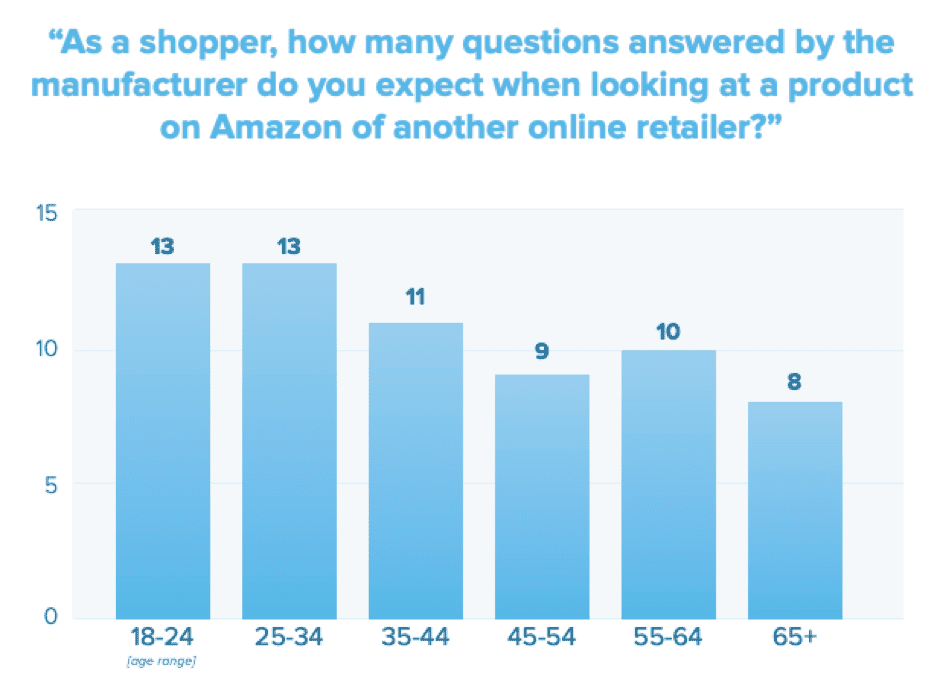
When shopping online, customers expect between eight and 13 answers from brands per product. This means answering more specific questions than standard shipping or pricing queries.
You should seek to answer the biggest questions within your product descriptions, using easy bullet points to put across size, material, key features etc. However, brands also need to make sure that customers can ask questions about products, whether via email or live chat.
Even more importantly, you should use these questions to work out what information is missing from your product description. After all, if you’re getting consumers asking the same question, this means they cannot find the answer on the product page or in your general FAQs.
It can also be a good idea to answer questions in different ways, such as within the written description of your product but also in product videos. This ensures that all bases are covered and you are appealing to a broader range of consumers.
Final thoughts
Utilizing honest product reviews can help build your brand reputation and establish trust with existing and potential customers. Just as with user-generated content on social media, reviews provide social trust, which is now an important part of the buying journey.
However, you shouldn’t shy away from negative reviews, as the way your brand handles these can also speak volumes. Use any negative points to deliver great customer service and address any areas that need to be worked on.
Either way, you should look at ways in which you can encourage honest reviews of your products to ensure you’re meeting with consumers’ expectations.